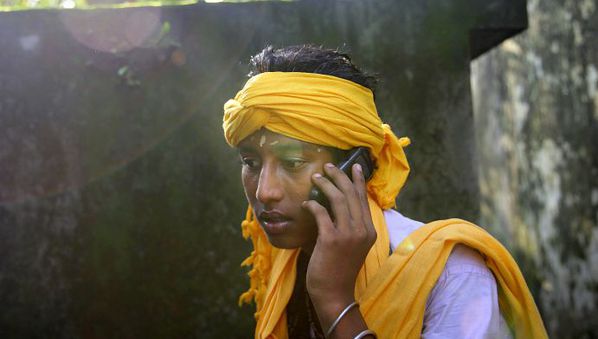A paper about SpiroCall explains how the system takes the place of a spirometer, a tool used to monitor conditions such as asthma and cystic fibrosis. SpiroCall consists of an automated call-in service that records the user breathing into a phone, and a computer that analyses the recording to estimate lung function.
Professional spirometers can cost up to US$5,000 each, making them too expensive for healthcare services with constrained budgets or for use in emergency situations. Provided that hospitals have computers that can run the software, SpiroCall costs only the price of the phone call and health worker time, the developers say.
“It is a challenge for some people in developing nations to access equipment like spirometers.”
Atul Malhotra, American Thoracic Society
“It is a challenge for some people in developing nations to access equipment like spirometers,” says Atul Malhotra, the president of the American Thoracic Society.
To create SpiroCall, a team of US scientists developed new computer algorithms to estimate lung function using machine learning. SpiroCall has an error rate of just seven per cent, the inventors say, despite being based on relatively humble technology. This is comparable to conventional spirometers used in hospitals.
Paper coauthor Elliot Saba says: “We’d like for SpiroCall to become a part of doctors’ toolkits for screening and checkup of pulmonary disorders, so that patients can use this technology instead of needing to travel to a clinic.”
SpiroCall, which runs on any phone, was inspired by a 2012 smartphone app the team developed called SpiroSmart.
While running clinical trials for SpiroSmart in the developing world, low levels of smartphone ownership proved problematic, says Saba. For example, only four per cent of people in Uganda own a smartphone, but 53 per cent have a more basic mobile phone.
“Efforts to make spirometry more accessible using commonly available technology should be encouraged,” says Malhotra.
Population growth and global air pollution will make lung diseases more common and access to affordable spirometry even more important in the future, the researchers say. The global market for spirometers was US$437 million in 2014, and the largest growth in respiratory monitoring devices is predicted in Asia.
But the researchers need more data on how SpiroCall functions across different healthcare models, service providers and countries, and whether it can be scaled up to meet global demand, Saba explains. “We’re currently working with clinics both inside the US and internationally to collect data and prepare for governmental certification programmes.”
